CALIDA RAWLES’ DEBUT AT PAMM: AWAY WITH THE TIDES
Calida Rawles presents Away with the Tides, an exhibition at Pérez Art Museum (PAMM) featuring all-new, site-specific works alongside a novel large-scale video installation. Marking Rawles’s first solo museum exhibition in the United States, Away with the Tides reflects aspects of Miami’s diverse communities, natural environments, and rich history.

Internationally recognized for her intricate and delicate acrylic on canvas paintings, Rawles blends hyperrealism with poetic abstraction and situates her subjects in dynamic, undulating spaces. Her recent work utilizes water as a vital, organic, and multifaceted element—as well as a historically charged space that concomitantly represents racial exclusion and individual healing.
Away with the Tides bridges the past and present, depicting elements of Miami’s history through the eyes of its residents. Delving into the experience of Black people in America, Rawles partnered with members of the historically Black community of Overtown in Miami. Akin to Tremé in New Orleans, the Historic West End in Charlotte, and countless other neighborhoods in the United States, Overtown transformed from a thriving cultural and commercial hub for Black people in the 1930s to a town subjected to gentrification, systemic racism, and mass displacement beginning in the 1950s and 60s.
-
Calida Rawles. Away with the Tides, 2024. Acrylic on canvas. 120 x 96 inches. Courtesy the artist and Lehmann Maupin, New York, Seoul, and London. Photo: Marten Elder
-
Calida Rawles. Away with the Tides, 2024. Acrylic on canvas. 120 x 96 inches. Courtesy the artist and Lehmann Maupin, New York, Seoul, and London. Photo: Marten Elder
-
Calida Rawles. Detail of Impact, 2024. Acrylic on canvas. 60 x 72 inches. Courtesy the artist and Lehmann Maupin, New York, Seoul, and London. Photo: Marten Elder
-
Calida Rawles. Release What I Will Not Give You, 2024. Acrylic on canvas. 30 x 40 inches. Courtesy the artist and Lehmann Maupin, New York, Seoul, and London. Photo: Marten Elder
-
Calida Rawles. To See What It Is, 2024. Acrylic on canvas. 84 x 48 inches. Courtesy the artist and Lehmann Maupin, New York, Seoul, and London. Photo: Marten Elder
Rawles’s process began with a series of preliminary photoshoots in Virginia Key Beach and the public pool at Theodore Gibson Park in Overtown, which then informed the subject matter for the lifelike paintings on view. Ranging from a 10-month-old baby to senior citizens, the portraits provide representation for those who call Overtown home while capturing the generational shift the community has undergone and giving shape to an American experience that is often overlooked. With residents as the subjects of her paintings, it became evident that the exhibition would be a transformative experience for some, it would also be their first time at a museum, emphasizing the silos Miami still struggles to navigate despite geographical proximity.
Furthermore, by photographing Black individuals in the ocean, Rawles interrogates the Atlantic Ocean's history as the site of the supremely exploitative Transatlantic Slave Trade. As a result, the finished work critically engages with Miami’s wate-entwined climate, while connecting to larger histories of beauty, oppression, and persistence in contemporary American life.
Related Topics
May interest you
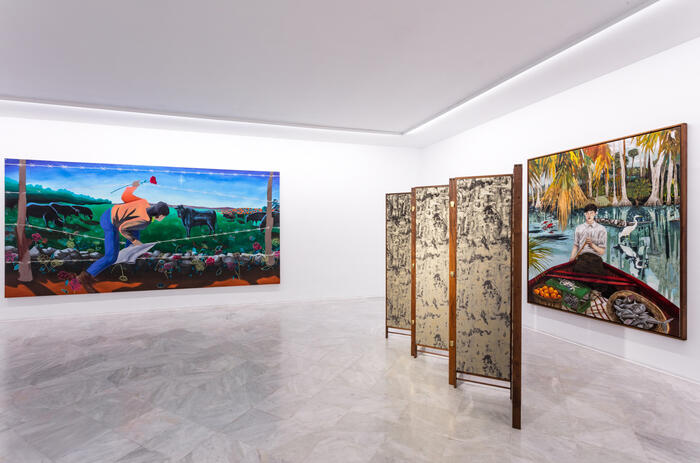
The exhibition Territorios: Latin American Contemporary Art in the Jorge M. Perez Collection shows a selection of works by more than 50 contemporary Latin American artists at the Centro Andaluz de Arte Contemporáneo (CAAC). It is curated by Jimena Blázquez Abascal, director of the CAAC.
TERRITORIES. CONTEMPORARY ART IN THE JORGE M. PÉREZ COLLECTION
The exhibition Territorios: Latin American Contemporary Art in the Jorge M. Perez Collection shows a selection of works by more than 50 contemporary Latin American artists at the Centro Andaluz de Arte Contemporáneo (CAAC). It is curated by Jimena Blázquez Abascal, director of the CAAC.

The exhibition Territorios: Latin American Contemporary Art in the Jorge M. Perez Collection shows a selection of works by more than 50 contemporary Latin American artists at the Centro Andaluz de Arte Contemporáneo (CAAC). It is curated by Jimena Blázquez Abascal, director of the CAAC.
TERRITORIES. CONTEMPORARY ART IN THE JORGE M. PÉREZ COLLECTION
The exhibition Territorios: Latin American Contemporary Art in the Jorge M. Perez Collection shows a selection of works by more than 50 contemporary Latin American artists at the Centro Andaluz de Arte Contemporáneo (CAAC). It is curated by Jimena Blázquez Abascal, director of the CAAC.
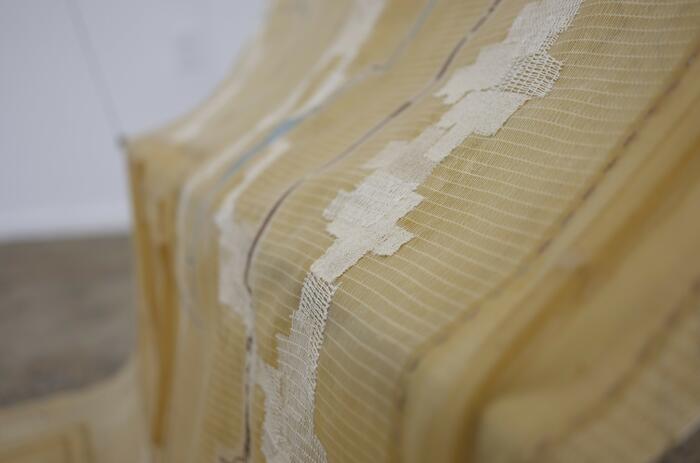
TOMAS REDRADO ART Gallery presented in Miami the fifth movement of MONTES NO VISIBLES (Unseen mountains), curated by Natalia Sosa Molina and Victor López Zumelzu. This new movement features the work of Andrea Ferrero (Peru), Julia Retz (Brazil), and Henry Palacio Clavijo (Colombia).

Xican-a.o.x. Body in Pérez Art Museum Miami (PAMM) is the first major exhibition to showcase work by artists who foreground the body as a site of political agency and imagination, artistic investigation, decolonization, and alternative forms of community.
BODIES AND POLITICS: A GROUP EXHIBITION AT PAMM
Xican-a.o.x. Body in Pérez Art Museum Miami (PAMM) is the first major exhibition to showcase work by artists who foreground the body as a site of political agency and imagination, artistic investigation, decolonization, and alternative forms of community.
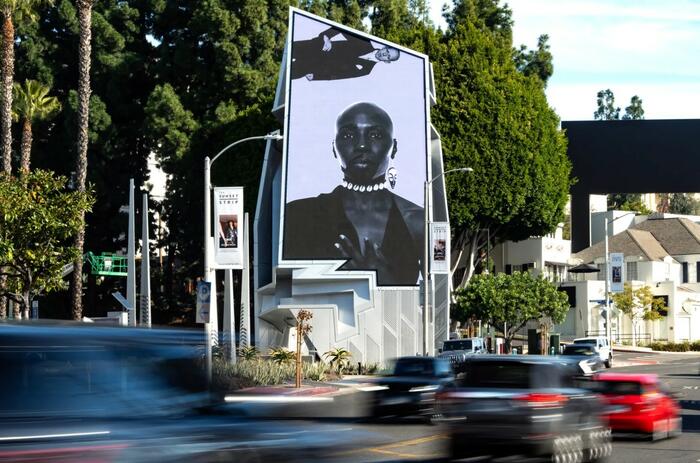
Fifteen artists working across the United States and Puerto Rico have been awarded the 2024 Latinx Artist Fellowships by the U.S. Latinx Forum (USLAF), with $50,0000 in unrestricted funding and a year-long program of professional engagement opportunities.
THE U.S. LATINX ART FORUM (USLAF) AWARDS LATINX ARTIST FELLOWSHIPS
Fifteen artists working across the United States and Puerto Rico have been awarded the 2024 Latinx Artist Fellowships by the U.S. Latinx Forum (USLAF), with $50,0000 in unrestricted funding and a year-long program of professional engagement opportunities.
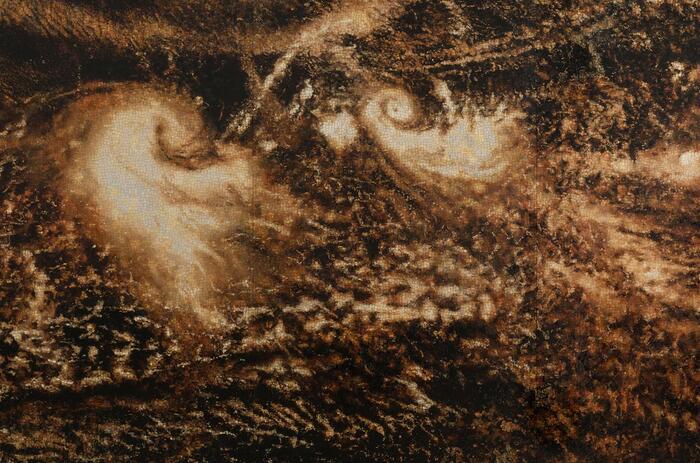
Artist-led and conceptually driven, Teresita Fernández / Robert Smithson is a subjective, intergenerational conversation between two practices, pulling the past into the present. The exhibition at Site Santa Fe critically considers entanglements between place, site, seeing, and deep time through the artists’ mutual engagement with material intelligence, geological agency, and cartographic fictions.
TERESITA FERNÁNDEZ / ROBERT SMITHSON: A CONVERSATION
Artist-led and conceptually driven, Teresita Fernández / Robert Smithson is a subjective, intergenerational conversation between two practices, pulling the past into the present. The exhibition at Site Santa Fe critically considers entanglements between place, site, seeing, and deep time through the artists’ mutual engagement with material intelligence, geological agency, and cartographic fictions.
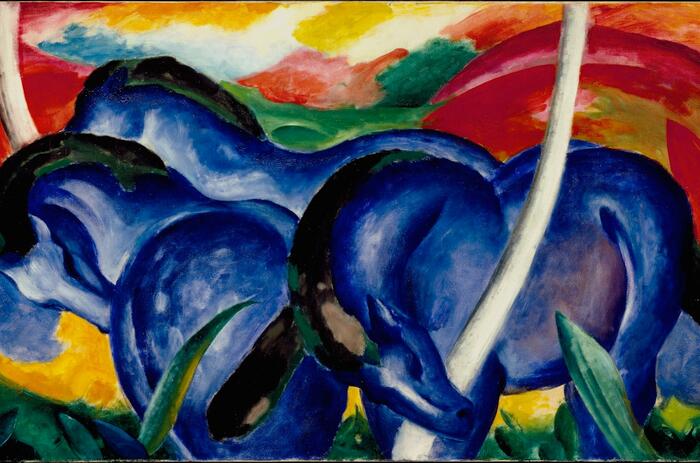
Grounded in the many meanings and ideas of “home,” This Must Be the Place is a major new exhibition at Walker Art Center showcasing works drawn from across the Walker’s dynamic collections.
THIS MUST BE THE PLACE: INSIDE THE WALKER’S COLLECTION
Grounded in the many meanings and ideas of “home,” This Must Be the Place is a major new exhibition at Walker Art Center showcasing works drawn from across the Walker’s dynamic collections.

The exhibition Territorios: Latin American Contemporary Art in the Jorge M. Perez Collection shows a selection of works by more than 50 contemporary Latin American artists at the Centro Andaluz de Arte Contemporáneo (CAAC). It is curated by Jimena Blázquez Abascal, director of the CAAC.
TERRITORIES. CONTEMPORARY ART IN THE JORGE M. PÉREZ COLLECTION
The exhibition Territorios: Latin American Contemporary Art in the Jorge M. Perez Collection shows a selection of works by more than 50 contemporary Latin American artists at the Centro Andaluz de Arte Contemporáneo (CAAC). It is curated by Jimena Blázquez Abascal, director of the CAAC.

TOMAS REDRADO ART Gallery presented in Miami the fifth movement of MONTES NO VISIBLES (Unseen mountains), curated by Natalia Sosa Molina and Victor López Zumelzu. This new movement features the work of Andrea Ferrero (Peru), Julia Retz (Brazil), and Henry Palacio Clavijo (Colombia).

Xican-a.o.x. Body in Pérez Art Museum Miami (PAMM) is the first major exhibition to showcase work by artists who foreground the body as a site of political agency and imagination, artistic investigation, decolonization, and alternative forms of community.
BODIES AND POLITICS: A GROUP EXHIBITION AT PAMM
Xican-a.o.x. Body in Pérez Art Museum Miami (PAMM) is the first major exhibition to showcase work by artists who foreground the body as a site of political agency and imagination, artistic investigation, decolonization, and alternative forms of community.

Fifteen artists working across the United States and Puerto Rico have been awarded the 2024 Latinx Artist Fellowships by the U.S. Latinx Forum (USLAF), with $50,0000 in unrestricted funding and a year-long program of professional engagement opportunities.
THE U.S. LATINX ART FORUM (USLAF) AWARDS LATINX ARTIST FELLOWSHIPS
Fifteen artists working across the United States and Puerto Rico have been awarded the 2024 Latinx Artist Fellowships by the U.S. Latinx Forum (USLAF), with $50,0000 in unrestricted funding and a year-long program of professional engagement opportunities.

Artist-led and conceptually driven, Teresita Fernández / Robert Smithson is a subjective, intergenerational conversation between two practices, pulling the past into the present. The exhibition at Site Santa Fe critically considers entanglements between place, site, seeing, and deep time through the artists’ mutual engagement with material intelligence, geological agency, and cartographic fictions.
TERESITA FERNÁNDEZ / ROBERT SMITHSON: A CONVERSATION
Artist-led and conceptually driven, Teresita Fernández / Robert Smithson is a subjective, intergenerational conversation between two practices, pulling the past into the present. The exhibition at Site Santa Fe critically considers entanglements between place, site, seeing, and deep time through the artists’ mutual engagement with material intelligence, geological agency, and cartographic fictions.

Grounded in the many meanings and ideas of “home,” This Must Be the Place is a major new exhibition at Walker Art Center showcasing works drawn from across the Walker’s dynamic collections.
THIS MUST BE THE PLACE: INSIDE THE WALKER’S COLLECTION
Grounded in the many meanings and ideas of “home,” This Must Be the Place is a major new exhibition at Walker Art Center showcasing works drawn from across the Walker’s dynamic collections.

The exhibition Territorios: Latin American Contemporary Art in the Jorge M. Perez Collection shows a selection of works by more than 50 contemporary Latin American artists at the Centro Andaluz de Arte Contemporáneo (CAAC). It is curated by Jimena Blázquez Abascal, director of the CAAC.
TERRITORIES. CONTEMPORARY ART IN THE JORGE M. PÉREZ COLLECTION
The exhibition Territorios: Latin American Contemporary Art in the Jorge M. Perez Collection shows a selection of works by more than 50 contemporary Latin American artists at the Centro Andaluz de Arte Contemporáneo (CAAC). It is curated by Jimena Blázquez Abascal, director of the CAAC.

TOMAS REDRADO ART Gallery presented in Miami the fifth movement of MONTES NO VISIBLES (Unseen mountains), curated by Natalia Sosa Molina and Victor López Zumelzu. This new movement features the work of Andrea Ferrero (Peru), Julia Retz (Brazil), and Henry Palacio Clavijo (Colombia).

Xican-a.o.x. Body in Pérez Art Museum Miami (PAMM) is the first major exhibition to showcase work by artists who foreground the body as a site of political agency and imagination, artistic investigation, decolonization, and alternative forms of community.
BODIES AND POLITICS: A GROUP EXHIBITION AT PAMM
Xican-a.o.x. Body in Pérez Art Museum Miami (PAMM) is the first major exhibition to showcase work by artists who foreground the body as a site of political agency and imagination, artistic investigation, decolonization, and alternative forms of community.

Fifteen artists working across the United States and Puerto Rico have been awarded the 2024 Latinx Artist Fellowships by the U.S. Latinx Forum (USLAF), with $50,0000 in unrestricted funding and a year-long program of professional engagement opportunities.
THE U.S. LATINX ART FORUM (USLAF) AWARDS LATINX ARTIST FELLOWSHIPS
Fifteen artists working across the United States and Puerto Rico have been awarded the 2024 Latinx Artist Fellowships by the U.S. Latinx Forum (USLAF), with $50,0000 in unrestricted funding and a year-long program of professional engagement opportunities.

Artist-led and conceptually driven, Teresita Fernández / Robert Smithson is a subjective, intergenerational conversation between two practices, pulling the past into the present. The exhibition at Site Santa Fe critically considers entanglements between place, site, seeing, and deep time through the artists’ mutual engagement with material intelligence, geological agency, and cartographic fictions.
TERESITA FERNÁNDEZ / ROBERT SMITHSON: A CONVERSATION
Artist-led and conceptually driven, Teresita Fernández / Robert Smithson is a subjective, intergenerational conversation between two practices, pulling the past into the present. The exhibition at Site Santa Fe critically considers entanglements between place, site, seeing, and deep time through the artists’ mutual engagement with material intelligence, geological agency, and cartographic fictions.

Grounded in the many meanings and ideas of “home,” This Must Be the Place is a major new exhibition at Walker Art Center showcasing works drawn from across the Walker’s dynamic collections.
THIS MUST BE THE PLACE: INSIDE THE WALKER’S COLLECTION
Grounded in the many meanings and ideas of “home,” This Must Be the Place is a major new exhibition at Walker Art Center showcasing works drawn from across the Walker’s dynamic collections.

The exhibition Territorios: Latin American Contemporary Art in the Jorge M. Perez Collection shows a selection of works by more than 50 contemporary Latin American artists at the Centro Andaluz de Arte Contemporáneo (CAAC). It is curated by Jimena Blázquez Abascal, director of the CAAC.
TERRITORIES. CONTEMPORARY ART IN THE JORGE M. PÉREZ COLLECTION
The exhibition Territorios: Latin American Contemporary Art in the Jorge M. Perez Collection shows a selection of works by more than 50 contemporary Latin American artists at the Centro Andaluz de Arte Contemporáneo (CAAC). It is curated by Jimena Blázquez Abascal, director of the CAAC.

TOMAS REDRADO ART Gallery presented in Miami the fifth movement of MONTES NO VISIBLES (Unseen mountains), curated by Natalia Sosa Molina and Victor López Zumelzu. This new movement features the work of Andrea Ferrero (Peru), Julia Retz (Brazil), and Henry Palacio Clavijo (Colombia).

Xican-a.o.x. Body in Pérez Art Museum Miami (PAMM) is the first major exhibition to showcase work by artists who foreground the body as a site of political agency and imagination, artistic investigation, decolonization, and alternative forms of community.
BODIES AND POLITICS: A GROUP EXHIBITION AT PAMM
Xican-a.o.x. Body in Pérez Art Museum Miami (PAMM) is the first major exhibition to showcase work by artists who foreground the body as a site of political agency and imagination, artistic investigation, decolonization, and alternative forms of community.

Fifteen artists working across the United States and Puerto Rico have been awarded the 2024 Latinx Artist Fellowships by the U.S. Latinx Forum (USLAF), with $50,0000 in unrestricted funding and a year-long program of professional engagement opportunities.
THE U.S. LATINX ART FORUM (USLAF) AWARDS LATINX ARTIST FELLOWSHIPS
Fifteen artists working across the United States and Puerto Rico have been awarded the 2024 Latinx Artist Fellowships by the U.S. Latinx Forum (USLAF), with $50,0000 in unrestricted funding and a year-long program of professional engagement opportunities.

Artist-led and conceptually driven, Teresita Fernández / Robert Smithson is a subjective, intergenerational conversation between two practices, pulling the past into the present. The exhibition at Site Santa Fe critically considers entanglements between place, site, seeing, and deep time through the artists’ mutual engagement with material intelligence, geological agency, and cartographic fictions.
TERESITA FERNÁNDEZ / ROBERT SMITHSON: A CONVERSATION
Artist-led and conceptually driven, Teresita Fernández / Robert Smithson is a subjective, intergenerational conversation between two practices, pulling the past into the present. The exhibition at Site Santa Fe critically considers entanglements between place, site, seeing, and deep time through the artists’ mutual engagement with material intelligence, geological agency, and cartographic fictions.

Grounded in the many meanings and ideas of “home,” This Must Be the Place is a major new exhibition at Walker Art Center showcasing works drawn from across the Walker’s dynamic collections.
THIS MUST BE THE PLACE: INSIDE THE WALKER’S COLLECTION
Grounded in the many meanings and ideas of “home,” This Must Be the Place is a major new exhibition at Walker Art Center showcasing works drawn from across the Walker’s dynamic collections.

The exhibition Territorios: Latin American Contemporary Art in the Jorge M. Perez Collection shows a selection of works by more than 50 contemporary Latin American artists at the Centro Andaluz de Arte Contemporáneo (CAAC). It is curated by Jimena Blázquez Abascal, director of the CAAC.
TERRITORIES. CONTEMPORARY ART IN THE JORGE M. PÉREZ COLLECTION
The exhibition Territorios: Latin American Contemporary Art in the Jorge M. Perez Collection shows a selection of works by more than 50 contemporary Latin American artists at the Centro Andaluz de Arte Contemporáneo (CAAC). It is curated by Jimena Blázquez Abascal, director of the CAAC.

TOMAS REDRADO ART Gallery presented in Miami the fifth movement of MONTES NO VISIBLES (Unseen mountains), curated by Natalia Sosa Molina and Victor López Zumelzu. This new movement features the work of Andrea Ferrero (Peru), Julia Retz (Brazil), and Henry Palacio Clavijo (Colombia).

Xican-a.o.x. Body in Pérez Art Museum Miami (PAMM) is the first major exhibition to showcase work by artists who foreground the body as a site of political agency and imagination, artistic investigation, decolonization, and alternative forms of community.
BODIES AND POLITICS: A GROUP EXHIBITION AT PAMM
Xican-a.o.x. Body in Pérez Art Museum Miami (PAMM) is the first major exhibition to showcase work by artists who foreground the body as a site of political agency and imagination, artistic investigation, decolonization, and alternative forms of community.

Fifteen artists working across the United States and Puerto Rico have been awarded the 2024 Latinx Artist Fellowships by the U.S. Latinx Forum (USLAF), with $50,0000 in unrestricted funding and a year-long program of professional engagement opportunities.
THE U.S. LATINX ART FORUM (USLAF) AWARDS LATINX ARTIST FELLOWSHIPS
Fifteen artists working across the United States and Puerto Rico have been awarded the 2024 Latinx Artist Fellowships by the U.S. Latinx Forum (USLAF), with $50,0000 in unrestricted funding and a year-long program of professional engagement opportunities.

Artist-led and conceptually driven, Teresita Fernández / Robert Smithson is a subjective, intergenerational conversation between two practices, pulling the past into the present. The exhibition at Site Santa Fe critically considers entanglements between place, site, seeing, and deep time through the artists’ mutual engagement with material intelligence, geological agency, and cartographic fictions.
TERESITA FERNÁNDEZ / ROBERT SMITHSON: A CONVERSATION
Artist-led and conceptually driven, Teresita Fernández / Robert Smithson is a subjective, intergenerational conversation between two practices, pulling the past into the present. The exhibition at Site Santa Fe critically considers entanglements between place, site, seeing, and deep time through the artists’ mutual engagement with material intelligence, geological agency, and cartographic fictions.

Grounded in the many meanings and ideas of “home,” This Must Be the Place is a major new exhibition at Walker Art Center showcasing works drawn from across the Walker’s dynamic collections.
THIS MUST BE THE PLACE: INSIDE THE WALKER’S COLLECTION
Grounded in the many meanings and ideas of “home,” This Must Be the Place is a major new exhibition at Walker Art Center showcasing works drawn from across the Walker’s dynamic collections.




